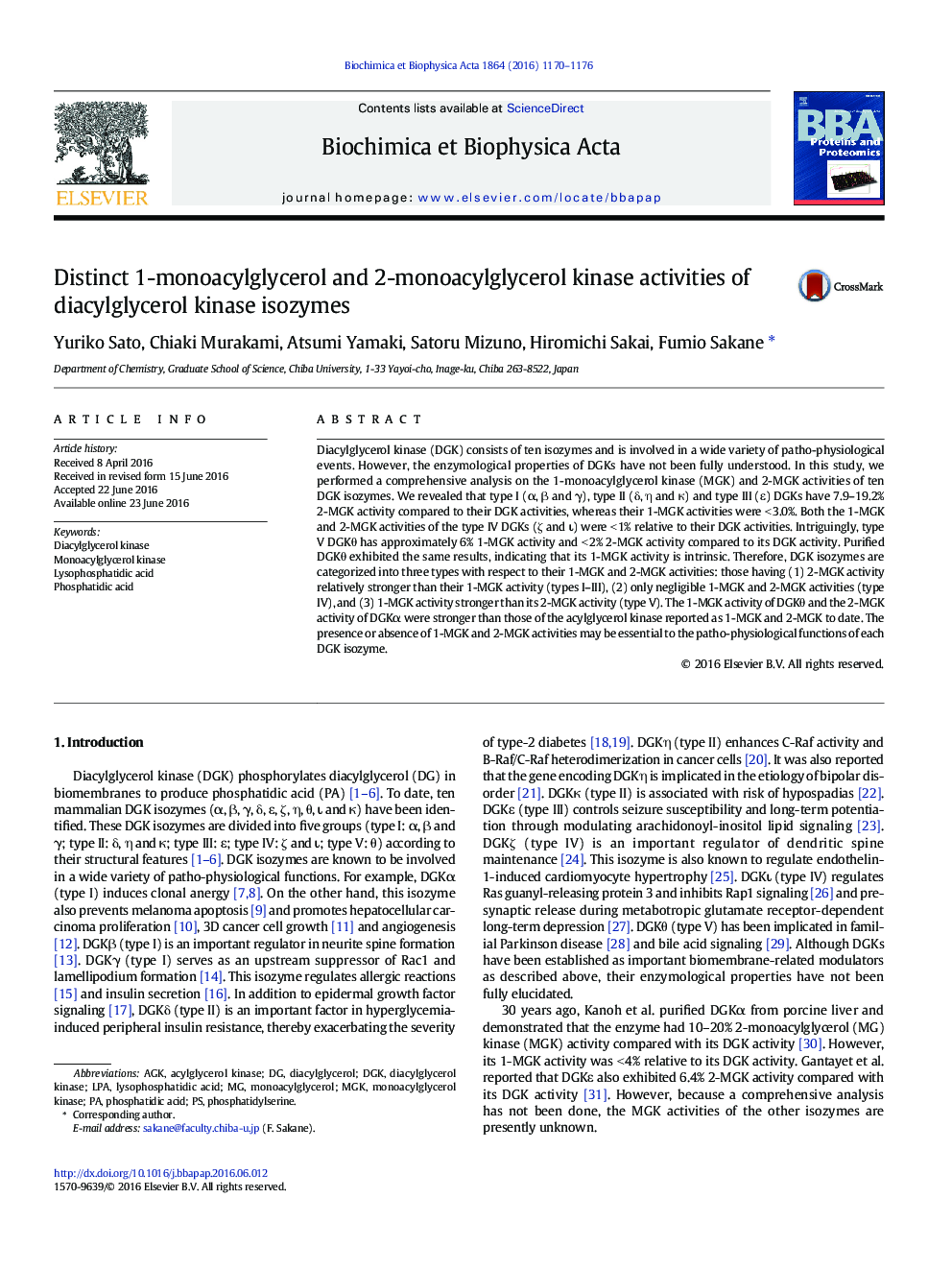| Article ID | Journal | Published Year | Pages | File Type |
|---|---|---|---|---|
| 1178054 | Biochimica et Biophysica Acta (BBA) - Proteins and Proteomics | 2016 | 7 Pages |
•Type I–III DGKs (α, β, γ, δ, η, κ and ε) have relatively stronger 2-MGK activity than 1-MGK activity.•Type IV DGKs (ζ and ι) only have negligible 1-MGK and 2-MGK activities.•Type V DGK (θ) has stronger 1-MGK activity than 2-MGK activity.•These differences may affect the pathophysiological functions of each DGK isozyme.
Diacylglycerol kinase (DGK) consists of ten isozymes and is involved in a wide variety of patho-physiological events. However, the enzymological properties of DGKs have not been fully understood. In this study, we performed a comprehensive analysis on the 1-monoacylglycerol kinase (MGK) and 2-MGK activities of ten DGK isozymes. We revealed that type I (α, β and γ), type II (δ, η and κ) and type III (ε) DGKs have 7.9–19.2% 2-MGK activity compared to their DGK activities, whereas their 1-MGK activities were < 3.0%. Both the 1-MGK and 2-MGK activities of the type IV DGKs (ζ and ι) were < 1% relative to their DGK activities. Intriguingly, type V DGKθ has approximately 6% 1-MGK activity and < 2% 2-MGK activity compared to its DGK activity. Purified DGKθ exhibited the same results, indicating that its 1-MGK activity is intrinsic. Therefore, DGK isozymes are categorized into three types with respect to their 1-MGK and 2-MGK activities: those having (1) 2-MGK activity relatively stronger than their 1-MGK activity (types I–III), (2) only negligible 1-MGK and 2-MGK activities (type IV), and (3) 1-MGK activity stronger than its 2-MGK activity (type V). The 1-MGK activity of DGKθ and the 2-MGK activity of DGKα were stronger than those of the acylglycerol kinase reported as 1-MGK and 2-MGK to date. The presence or absence of 1-MGK and 2-MGK activities may be essential to the patho-physiological functions of each DGK isozyme.
Graphical abstractFigure optionsDownload full-size imageDownload high-quality image (62 K)Download as PowerPoint slide
